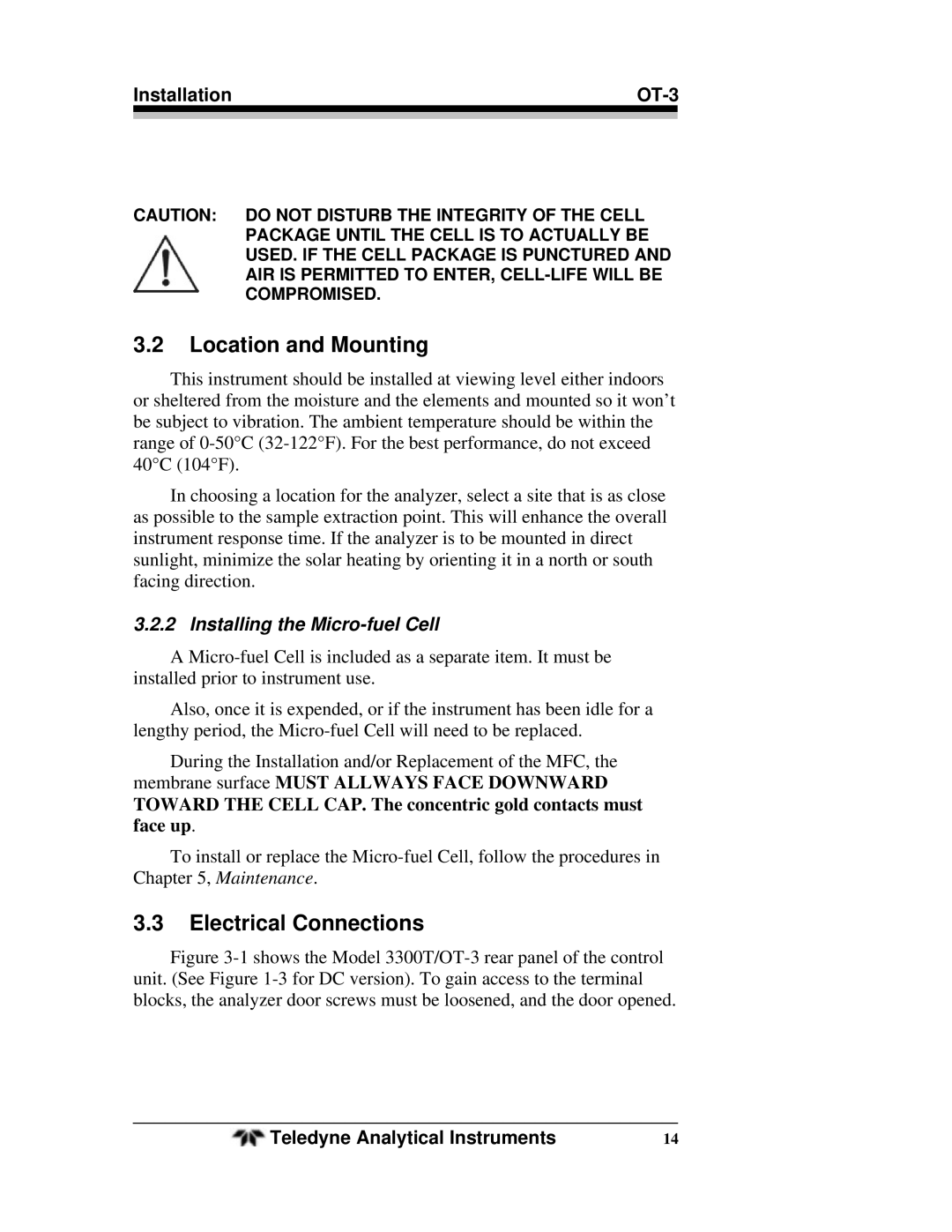
Installation | |
|
|
CAUTION: DO NOT DISTURB THE INTEGRITY OF THE CELL PACKAGE UNTIL THE CELL IS TO ACTUALLY BE USED. IF THE CELL PACKAGE IS PUNCTURED AND AIR IS PERMITTED TO ENTER,
3.2Location and Mounting
This instrument should be installed at viewing level either indoors or sheltered from the moisture and the elements and mounted so it won’t be subject to vibration. The ambient temperature should be within the range of
In choosing a location for the analyzer, select a site that is as close as possible to the sample extraction point. This will enhance the overall instrument response time. If the analyzer is to be mounted in direct sunlight, minimize the solar heating by orienting it in a north or south facing direction.
3.2.2 Installing the Micro-fuel Cell
A
Also, once it is expended, or if the instrument has been idle for a lengthy period, the
During the Installation and/or Replacement of the MFC, the membrane surface MUST ALLWAYS FACE DOWNWARD
TOWARD THE CELL CAP. The concentric gold contacts must face up.
To install or replace the
3.3Electrical Connections
Figure 3-1 shows the Model 3300T/OT-3 rear panel of the control unit. (See Figure 1-3 for DC version). To gain access to the terminal blocks, the analyzer door screws must be loosened, and the door opened.
Teledyne Analytical Instruments | 14 |
